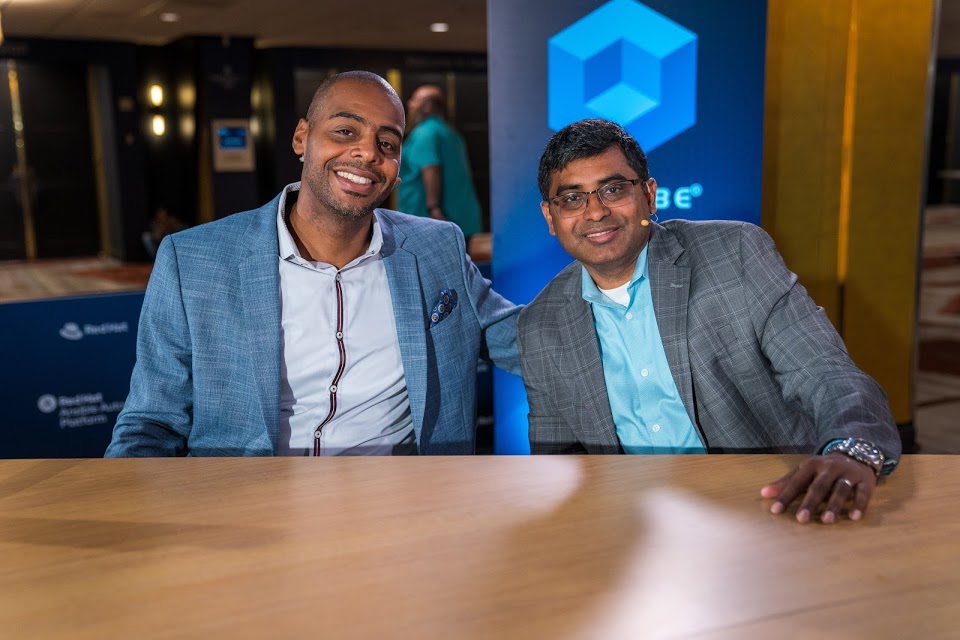 CLOUD
CLOUD
 CLOUD
CLOUD
 CLOUD
CLOUD
If there is any doubt about whether automation tools can make a difference in the information-technology space, consider the dilemma faced by a major retail customer of Red Hat Inc.
Because so many people were involved in the cloud provider service-level agreement, it resulted in a series of manual tasks and lots of waiting for someone else to take the next step. The net time was 72 days to provision one instance at this retail firm, according to Vijay Chebolu (pictured, right), director of the cloud practice at Red Hat.
“Everybody was working on the SLA, and we actually brought it down to less than a day,” Chebolu recalled. “You just gave the developer, who was looking to code, 71 days back. That’s the impact that we see automation bringing back to the customer.”
Chebolu spoke with John Furrier (@furrier) and Stu Miniman (@stu), co-hosts of theCUBE, SiliconANGLE Media’s mobile livestreaming studio, during the AnsibleFest event in Atlanta, Georgia. He was joined by Walter Bentley (pictured, left), senior manager of the automation practice at Red Hat, and they discussed the customer mindset when it comes to automation and how the company relies on its open-source philosophy to create collaborative groups (see the full interview with transcript here). (* Disclosure below.)
Red Hat has upped the ante in enterprise automation with this month’s release of the Ansible Automation Platform, designed to accelerate collaboration between teams and create a consistent user experience across multiple tech domains.
The retail example shows how an approach that focuses on one small task rather than a major business-wide automation strategy can quickly pay dividends.
“A lot of organizations always want to boil the ocean,” Bentley said. “When it comes to automation, they feel that if they are not doing this grand transformation and doing this huge project, then they’re not doing automation. We’re showing them that you can break things up into smaller chunks.”
Red Hat has also leveraged its community-based ethos, forged in the open-source world, to create constituencies around technologies such as automation. The company calls these “Communities of Practice,” a collection of business unit members, solution architects, or consultants who mutually share ideas and best practices.
“They collaborate and work together on offering new solutions to the market,” Chebolu said. “We’re taking those experiences back to our customers and enabling them to create these communities of practice, an automation community that everybody can be a part of.”
Watch the complete video interview below, and be sure to check out more of SiliconANGLE’s and theCUBE’s coverage of the AnsibleFest event. (* Disclosure: TheCUBE is a paid media partner for AnsibleFest. Neither Red Hat Inc., the sponsor for theCUBE’s event coverage, nor other sponsors have editorial control over content on theCUBE or SiliconANGLE.)
THANK YOU